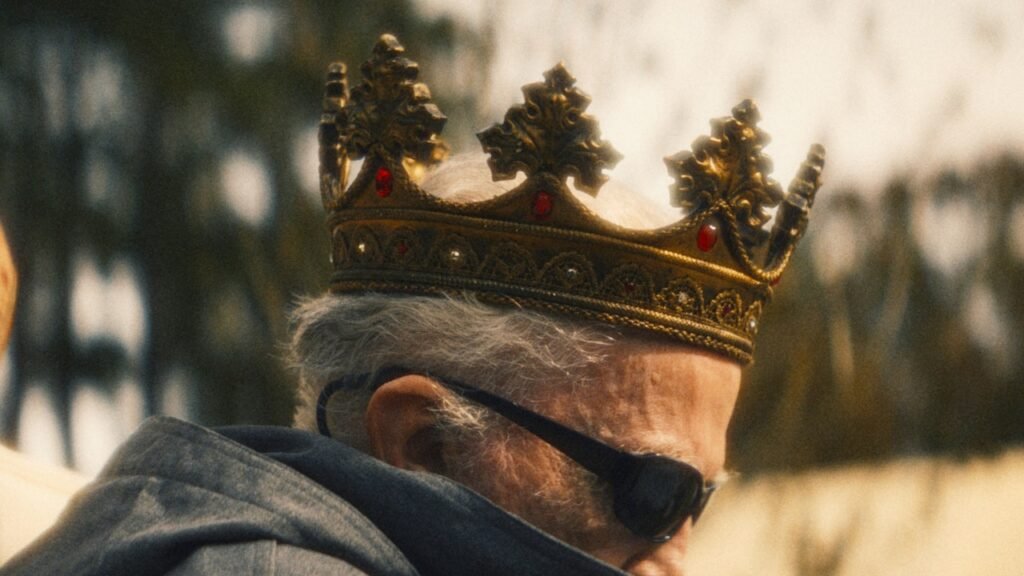A Succession Battle Over America’s Largest Ren Faire

There are few filmmakers extra curious in regards to the emotional lives of the aged than the wunderkind documentarian Lance Oppenheim. In 2020, Oppenheim, then twenty-four years outdated, launched “Some Sort of Heaven,” a documentary about an unlimited retirement group in Florida that’s extra like an amusement park or a university campus than a spot the place folks go to develop outdated. The group, known as the Villages, offered no scarcity of eccentric personas for Oppenheim’s beneficiant character research: one central determine of the movie was a bad-boy senior citizen named Dennis, who lived in a van by the Villages, trawling the property for ladies to hitch his wagon to, each romantically and financially. “I mentioned from the get-go that I needed to reside quick, love exhausting, and die poor,” he mentioned.
This spring, Oppenheim launched “Spermworld,” a documentary adaptation of a Instances story in regards to the sperm-donation black market. This movie, too, is a sequence of portraits, and one in all “Spermworld” ’s topics is a single sixtysomething sperm donor named Steve who offers ladies sperm out of some do-gooder intuition gone astray. He expects nothing in return—till he forges a reference to one of many recipients, Rachel, many many years his junior, who clings onto the hope that she’s going to get pregnant regardless of having cystic fibrosis. The pair strike up an unlikely and bittersweet friendship that teeters, achingly, getting ready to romantic. From Oppenheim’s vantage, the aged are riveting topics, stuffed with expertise and remorse, and imbued with a way of urgency as they attempt to fulfill their wishes.
The topic of Oppenheim’s latest undertaking, an HBO docuseries known as “Ren Faire,” is George Coulam, the eighty-six-year-old overlord of the Texas Renaissance Pageant, the biggest such truthful in the US. Renaissance enthusiasm is greater than only a area of interest subculture: Coulam’s fifty-five-acre competition attracts greater than half 1,000,000 guests yearly, and it’s so elaborate that its Website gives a “Survival Information for Newbies.” Coulam, a detractor from the Mormon Church, has been working the competition for greater than 4 many years, a time over which he integrated his land as a metropolis in Texas to avoid native legislation.
King George, as he’s usually known as, is a real oddball. His private Website boasts that he’s a “wholesome 6’2”, 173 lbs., 86-year-old sexually energetic Caucasian male entrepreneur.” He’s, like so many self-mythologizing entrepreneurs, an exasperating visionary, each fearsome and feeble. Coulam listens to Enya all day, daily, and plasters his partitions with grammatically unusual reminders to himself. (“Life . . . Well being & Longevity 95 . . . Companionship . . . Feminine . . . Monetary Safety & Crew,” one in all them reads.) He spends a lot of his time screening ladies he’s met by means of a sugar-daddy Website; he categorically rejects these with pretend breasts. He boasts about his studying habits and his rococo toilet. “It’s overly embellished,” he muses. “That’s what artwork is supposed to be.”
In 9 years, on the age of ninety-five, George has plans to take part in an assisted-suicide program in Switzerland. Which means that he should discover the truthful’s subsequent government, a course of that pits a community of characters in opposition to each other in a succession battle that offers the TV present a run for its cash. “Ren Faire” alternates focus among the many figures vying for management of the competition as soon as Coulam is gone. There’s Louie Migliaccio, a slippery kettle-corn mogul who wears his hair in a person bun and vapes incessantly. There’s Jeffrey Baldwin, Coulam’s masochistically loyal common supervisor with a background in appearing and a fierce enthusiasm for the tradition and the sanctity of Renaissance festivals. And there’s Darla, a straight-talking higher-up on the competition who makes herself accessible to select up the items when Coulam’s retirement plans go awry.
With characters as richly entertaining as King George and his minions, Oppenheim wanted to do little to make “Ren Faire” compelling. However, whilst a younger filmmaker, Oppenheim already has a robust set of visible and narrative signatures which he deploys to amplify his subject material, rendering his tales way more like dramatic movies than standard documentaries. He avoids talking-head interviews. He likes dreamy instrumental soundtracks, intense colours, and lengthy, sluggish, symmetrical photographs. Oppenheim’s work is much less about coldly capturing actuality than it’s about discovering the characters who will do absurd issues on digicam, generally to the purpose of feeling staged. In a single “Ren Faire” scene, Baldwin, Coulam’s loyal henchman, faces the digicam and reads a pleading letter to George—absolutely at Oppenheim’s request.
At occasions, in “Spermworld,” these directorial thrives felt heavy-handed; photographs of sperm floating throughout the display whereas ambient synths plinked within the background generally distracted from the charming psychodramas of the movie’s characters. However, in “Ren Faire,” these impulses work to honor the topics of the movie. Individuals attend Ren Faires, in droves, to inhabit the world of fantasy which the interval invokes. There’s a aptitude for the dramatic on the Texas Renaissance Pageant, the place folks parade round in elaborate costumes, collaborating in occasions like a Barbarian Battle Cry contest, and chomping on large turkey legs from the concession stands. The characters featured are always making reference to essentially the most fantastical of touchstones: Willy Wonka, Disney films, and “Recreation of Thrones” all come into play. “I believed I used to be Charlie [at the Chocolate Factory], however proper now I really feel extra like Mike Teavee,” Baldwin laments after being spurned by Coulam. By giving these folks, and these settings, such a visually placing and theatrical framing, Oppenheim is assembly them on their very own phrases.
Oppenheim’s work is so interesting, partly, due to how simple it’s to think about the choice, straight-faced variations of his documentaries. Within the period of slapdash, bingeable docuseries ripped from the headlines, you may image a “Ren Faire” filmed extra straightforwardly, revelling in or mocking the worldwide subculture of Renaissance fans. There could possibly be, by the identical token, a model that takes fashionable Renaissance festivals too critically, splicing historic explanations with pedantic sound bites from pop-culture pundits. These would most likely make for profitable documentaries, too.
However Oppenheim’s model of “Ren Faire” is each explicitly and implicitly in regards to the pursuit of artistry within the face of business pursuits, and the misfit personas caught up in between: the Renaissance, in spite of everything, was a time when artists had been held within the highest esteem. “They had been painters, sculptors, poets, entrepreneurs,” Coulam says. “That’s what I need to be—all of the issues that the Renaissance folks did.” Coulam turns this concept over in his head repeatedly as he mulls the way forward for his truthful, angrily demanding ridiculous sums of cash from potential consumers whereas anguishing over the integrity of the competition. Although he desperately needs to retire, Coulam’s idealism and want for management have solely hardened with outdated age. There’s one scene wherein he berates an worker for not having perfected a video commercial for the competition earlier than presenting it to the King. The same impulse glints all through all of Oppenheim’s work—the need to remake the world as you’ve envisioned it, whilst you nonetheless can. ♦





